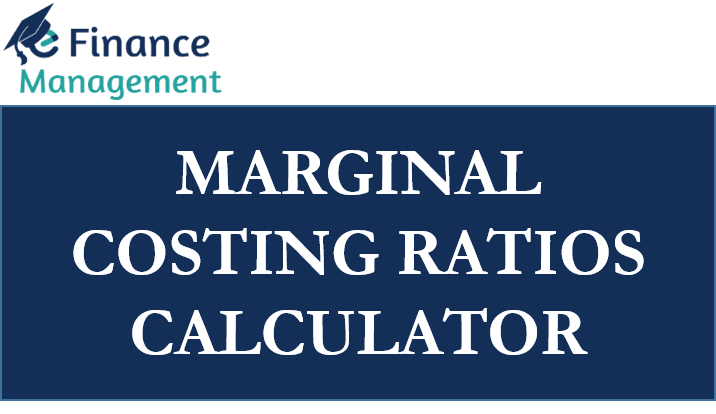Marginal Costing Ratios
Marginal costing ratios calculator assists management in making managerial decisions by instantly calculating various important metrics with regard to the cost of the product or service. It shows the additional cost incurred for producing each additional unit. Under this method, the total cost is bifurcated into fixed cost and variable cost. Marginal cost can be defined as a variable part of the total cost.
Formula for Calculating Marginal Costing
To calculate different terms under marginal costing, the following formulas are to be taken into account:
| Terms | Formula |
|---|---|
| Contribution | Total Sales – Total Variable Cost |
| Contribution per Unit | (Total Sales – Total Variable Cost) / Number of units sold |
| PV/Contribution Ratio | Contribution * 100 /Total Sales |
| BEP Units | Fixed Cost / Contribution per unit |
| BEP Sales | Fixed Cost / Contribution Ratio |
| Margin of Safety | Total Sales – BEP Sales |
| Margin of Safety Ratio | (Total Sales – BEP Sales) * 100/Total Sales |
About the Calculator / Features
This calculator calculates Total Contribution, Contribution per Unit, PV/Contribution Ratio, BEP Units, BEP Sales, and Margin of Safety Ratio by only providing the following details in it:
- Total Sales
- Total Variable Cost
- Fixed Cost
- Number of Units Sold

Marginal Costing Ratios Calculator
How to Calculate using a Calculator
One has to insert the following data in the calculator above to calculate the result:
Total Sales
This figure can be obtained from the Income & Expenditure Statement of the entity.
Total Variable Cost
The total variable cost of the units sold can be derived from the costing records of the organization.
Fixed Cost
The fixed cost associated with the goods sold can also be obtained from the cost records of the organization.
Number of Units Sold
A number of units sold can be obtained from the sales record of the entity.
Example of Marginal Costing
Company A manufacture and sell 5,000 articles at a price of $20 per article. The variable cost per unit is $8, and the total fixed cost is $40,000. Considering the following data, let`s calculate Contribution, PV Ratio, BEP & Margin of Safety.
| Total Sales | SP per unit * Number of units sold | $20*5,000 | $100,000 |
| Total Variable Cost | VC per unit * Number of units sold | $8*5,000 | $40,000 |
| Fixed Cost | – | – | $40,000 |
| Contribution | Total Sales – Total Variable Cost | $100,000-$40,000 | $60,000 |
| PV/Contribution Ratio | Contribution * 100 / Sale | $60,000*100/100,000 | 60% |
| BEP Sales | Fixed cost / PV Ratio | $40,000/60% | $66,667 |
| Margin of Safety | Total Sales – BEP Sales | $100,000-$66,667 | $33,333 |
Interpretation of Marginal Costing
In the above example, the contribution per unit is $12 (i.e., SP per unit – VC per unit, $20-$8). A change in per unit selling price or variable cost will cause a change in contribution and will eventually cause a change in PV Ratio, BEP, and Margin of Safety.
Also Read: Target Profit Sales Calculator
Above all, in the current example explained above, it is clear that the business has reasonable safety of 33%, i.e., if the sales fall by 33%, the business will still keep sustaining.
Cautions
Marginal costing does not provide any standard for the evaluation of performance. A system of budgetary control and standard costing provides more effective control than that obtained by marginal costing.

